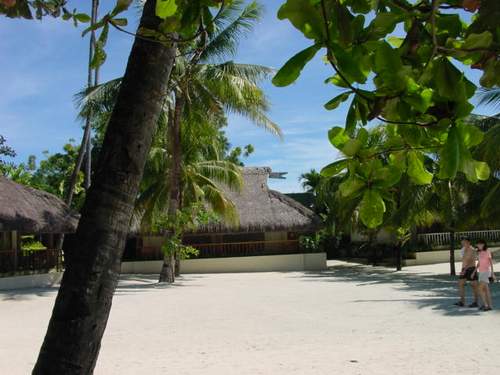
Cebu is sometimes called the Queen City of the South. Historic Cebu was where the Portugese Captain Ferdinand Magellan planted the Cross of Christianity in 1521.
Strategically lying at the center of the Visayas, Cebu has been a popular entry point among merchants through the centuries.
The last three decades saw the blossoming of Cebu into a booming tourist destination.
Touted as the ultimate playground, many leisure enclaves have risen throughout the province, taking full advantage of the enviable sun-and-sand-and-mountain location.
Arguably the country's diving center, scuba divers find Moalboal, Sogod, Pescador, Santa Rosa Islands and Boyong Boyong in Mactan as prime dive spots. World-class resorts fringe the islands, serving both divers and plain tourists alike.
Modern shopping malls, fine dining restaurants and lively entertainment centers,includingg two casinos and sprawling golf fairways, add luster to Cebu's landscape, offering the tourist a surfeit of activities to engage in.
Other points of interest include: Magellan's Cross, Cebu's most significant landmark; Basilica Minore de Santo Nino, a courtly ancient church which houses the oldest religious image in the country; Fort San Perdro, formerly a Spanish Garrison and now a park-cum-museum; Taoist Temple in Beverly Hills, where people go for worship and fortune-telling; the mountain town of Busay, Cebu's flower basket; and the old town of Carcar, resplendent with antebellum architecture.
GEOGRAPHY
Located between 9°25' N & 11°30' N and between 123° 25' E & 124° 30'E in the center of the archipelago. Cebu is 365 miles south of Manila and can be reached in an hour through air travel.
The topography of Cebu is characterized by narrow coastlines, limestone plateaus, and coastal plains but with predominant rolling hills and rugged mountain ranges traversing the northern and southern lengths of the island. Although Cebu's steep mountains reach over 1,000 meters, the island lacks substantial forest cover. In the towns of Bogo, San Remigio, Medellin and Daan Bantayan at the northern tip of the province, considerable flat tracts of land are found. Of the three biggest islands, Mactan and Bantayan are relatively flat while Camotes is hilly.
CLIMATE
Cebu's weather is relatively moderate, having no distinct wet and dry season, the perfect vacation spot for seasons. One can bask under the sunshine the whole year through since Cebu is blessed with a tropical climate with a generally fair temperature range of between 23 –33°C (73-91°F). Coolest temperature can be felt in January and warmest in May.
POPULATION
Per data gathered by the Statistics Office as of May 1, 2000, Cebu has a population of about 3,356,137 with the city proper accounting for 718,821. Being the second largest metropolitan area in the country after Manila, migrant workers from neighboring islands in Visayas contribute immensely to the working population.
DIALECT
Cebuano is the dialect in the province, which is also widely spoken in the Visayas and Mindanao. Tagalog and English are also spoken and understood.
INDUSTRIES
Copper and dolomite mining, industrial parts assembly, food processing, footwear, handicraft, rattancraft, woodcraft, metalcraft, garments, shellcraft, ceramics, basketware, rattan and wicker furniture, cement, costume jewelry, giftware, fertilizer, stonecraft, food products and preserves, electronic devices, transistors and diodes, vehicle assembly, agricultural products.
In 1997, Central Visayas recorded a total of P8,261 million worth of investments, with Cebu seizing the bulk of income generated from investment amounting to P7,695 million.

No comments:
Post a Comment